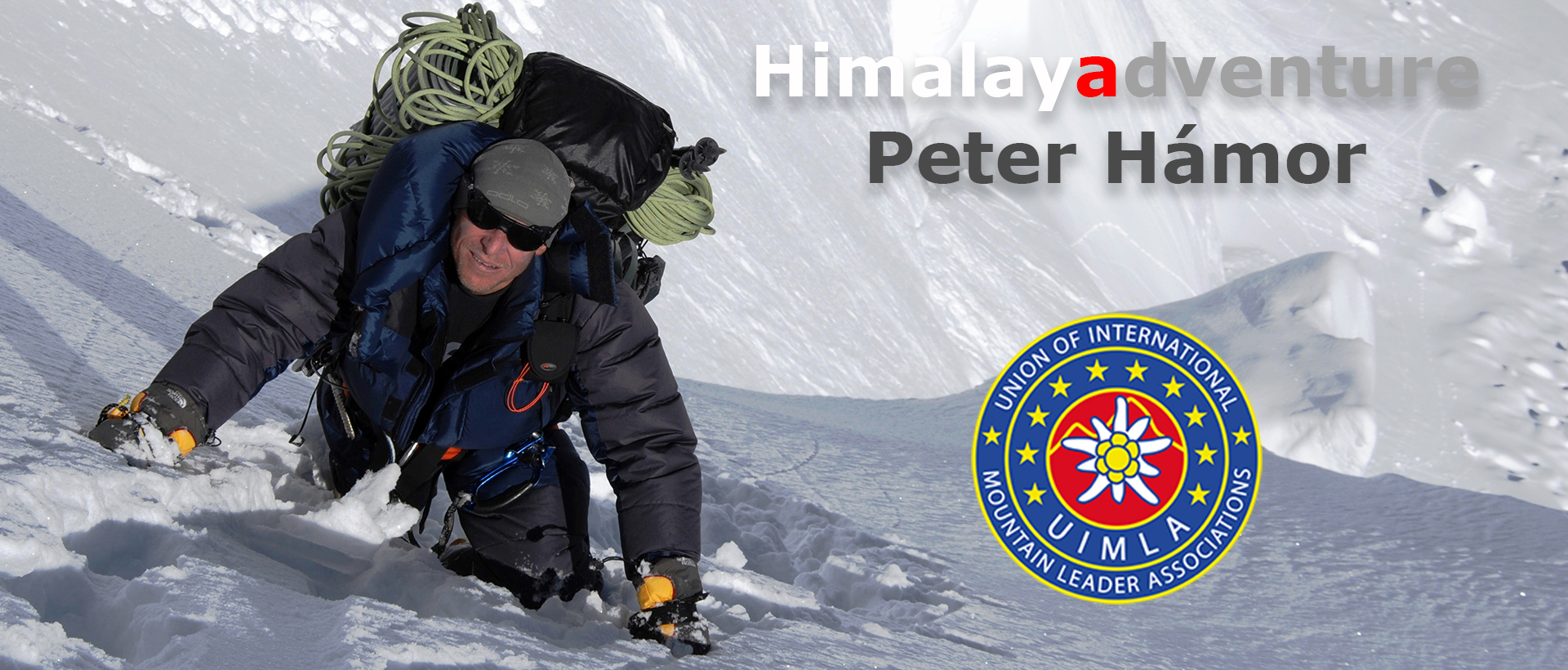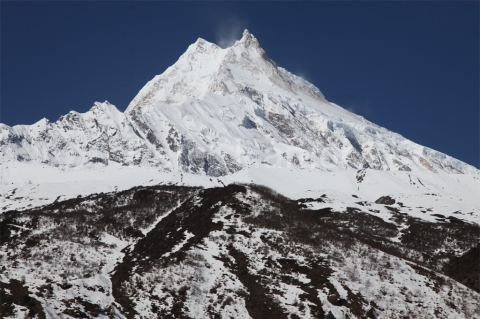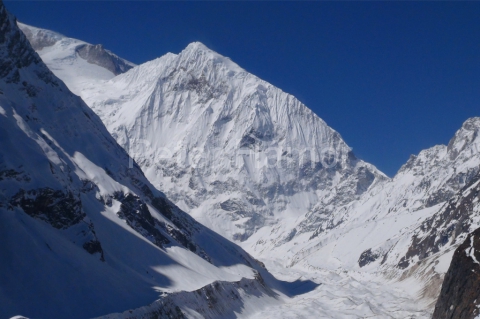The principal goal of the project Himalayadventure MMXV is to climb the 8th highest mountain in the world Manaslu (8,163m) and its closest neigbour Manaslu North (7,157m), which will be preceded by a series of acclimatisation ascents in the Solo Khumbu valley. The ascents will be made in light style, without the aid of high altitude porters and supplemental oxygen.
GOALS
- Manaslu (8,163 m) – April 2015
- Manaslu North (7,157 m) – May 2015
THE FIRST PART: MANASLU (8,163 M)
Washed by the rivers Buri Gandaki and Marshyangdi, the massive ice range is located in the Central Himalayas near the Nepal-China border. The main summit of Manaslu, the highest amongst the Nepal’s 8000m peaks, had been unknown to climbers until 1950 due to the country’s political isolation. The Japanese made the first attempt on the mountain in 1952 but only their fifth expedition in 1956 was successful. The mountain range of Manaslu includes a handful of other impressive peaks: east summit of Manaslu, Himalchuli and Manaslu North, the latter being a 7,157-metre high mountain unclimbed before 1979. Its North-East face towering above the Larkya Glacier ranks among the most interesting faces in the Himalayas.
THE SECOND PART: MANASLU NORTH (7,157 M)
The 8th highest mountain on Earth with its altitude of 8,163 metres, Manaslu is located entirely in Nepal, in the Mansiri Himal mountains, Gurkha mountain range, some 70 kilometres from Annapurna – its closest 8000m neighbour. The mountain’s name originates in Sanskrit and translates as “the Mountain of the Spirit”. It was climbed for the first time by Toshio Imanishi and Sherpa Gyalzen Norbu, members of a Japanese expedition, on 9th May 1956. The first winter ascent was accomplished by Polish mountaineers Maciej Berbeka and Ryszard Gajewski who summited under extremely unfavourable conditions in January 1984. In 1997, two Slovak mountaineers Peter Sperka and Miroslav Rybansky climbed Manaslu. Another member of their expedition Juraj Kardhordo was last seen on the ridge near the main summit and Miro Rybansky died during the descent. This seemingly peaceful mountain is still considered to be one of the most dangerous 8000m peaks.


